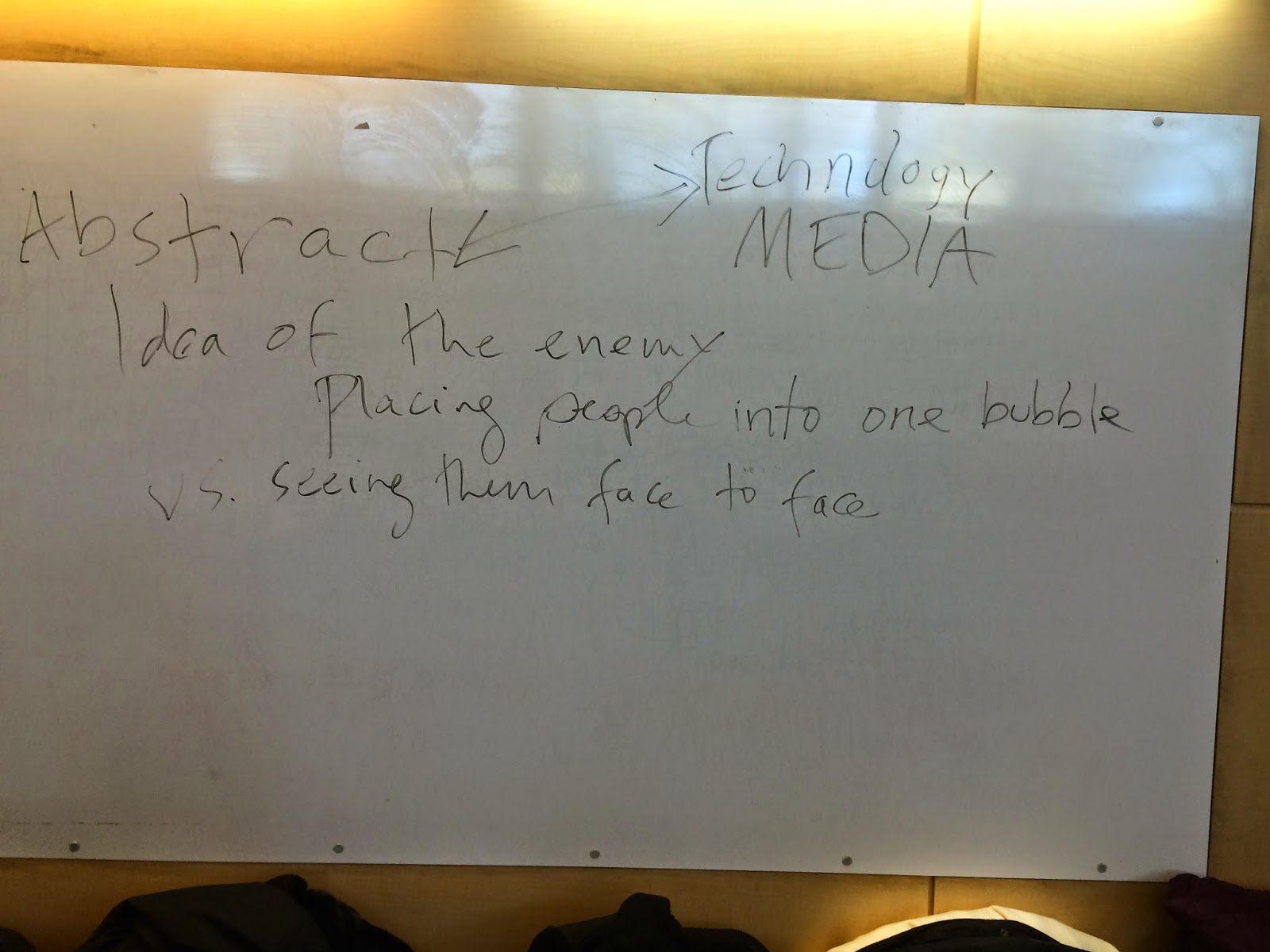This is Andrew Weinstein once again with an update on the Hofstra Opera Theater.
Today, January 8th, 2014 was a very interesting day to say the least. The singers finally got to meet the entire production staff, learn about the design concept for the show, and have two full music run-throughs of Die Verschworenen. Our day started with a one hour discussion amongst the singers and the crew about War. Below are just a few points that we wrote down.

After a while, we found that war can come down to many forms and takes on different meanings. As young people of the 21st century, we have seen war on television, depicted in movies, and have it affect our loved ones. War has been a phenomenon for centuries, practically millennia. What was surprising to most of us was that as long as there has been movement, there has been a group of people seeking an end to wars. This is where Lysistrata comes into the discussion. Written by Aristophanes in 411 BC, the play depicts a coalition of women who deny sex to their husbands in order to stop the Peloponnesian War. Over 2400 years later, this comedy with a serious antiwar message has been performed in times of international conflict and revolution by women and men alike.

With the 100th anniversary of WW1, the end of US involvement in Afghanistan and Iraq, and the deadly conflict between Palestine and Israel, 2014 was a year that war would not leave the minds of the public. The art world has been using the creative outlets to discuss this topic. At Queens College back in October, students performed Leonard Bernstein's
Mass, combining the topics of religion, free will, and love. The Metropolitan Opera has been under fire for their production of John Adams'
The Death of Klinghoffer, portraying the hijacking of the Achille Lauro cruise liner and the murder of a Jewish American passenger. Now, Hofstra takes the plate for a piece about war.
Isabel Milenski, our wonderful director for the past 5-6 years, has set Die Verschworenen in a War Room, a meeting place where important people make decisions that affect the world. Our soldiers are those of an unknown but powerful country. The women are of a socialite class, especially the General's wife, Barbara.
For the first time ever, Hofstra Opera will be using video projections and media. We will be incorporating action on stage as well as visual depictions of real world conflicts.
The second half of the show will be a dramatization of Die Winterreise. This song cycle, based on poems of Wilhelm Müller, deals with death, loneliness, and lost love. This portion will be portrayed as a military funeral, where friends, family, and colleagues discuss their lives and the impact war has had on them.
Each character has something to do with the soldier. You have his wife, his commanding officer, his platoon, a soldier suffering from PTSD, etc. At this point, the soloists are still in the process of exploring the nature of their songs and characters, but now there is a substance to their inquiries and discovery.
All in all, this year's show is unlike anything that has been done by the music department at Hofstra University. The Drama Department's recent production of Burial at Thebes was a great introduction for us students who were unfamiliar with the philosophy of war in greek theatre.
I hope that this rundown of our concept helps you to understand our goals and that you come to enjoy the show for yourselves, or at least that you learned something. Keep checking in for more content from the cast and crew of Hofstra Opera Theater.























.JPG)